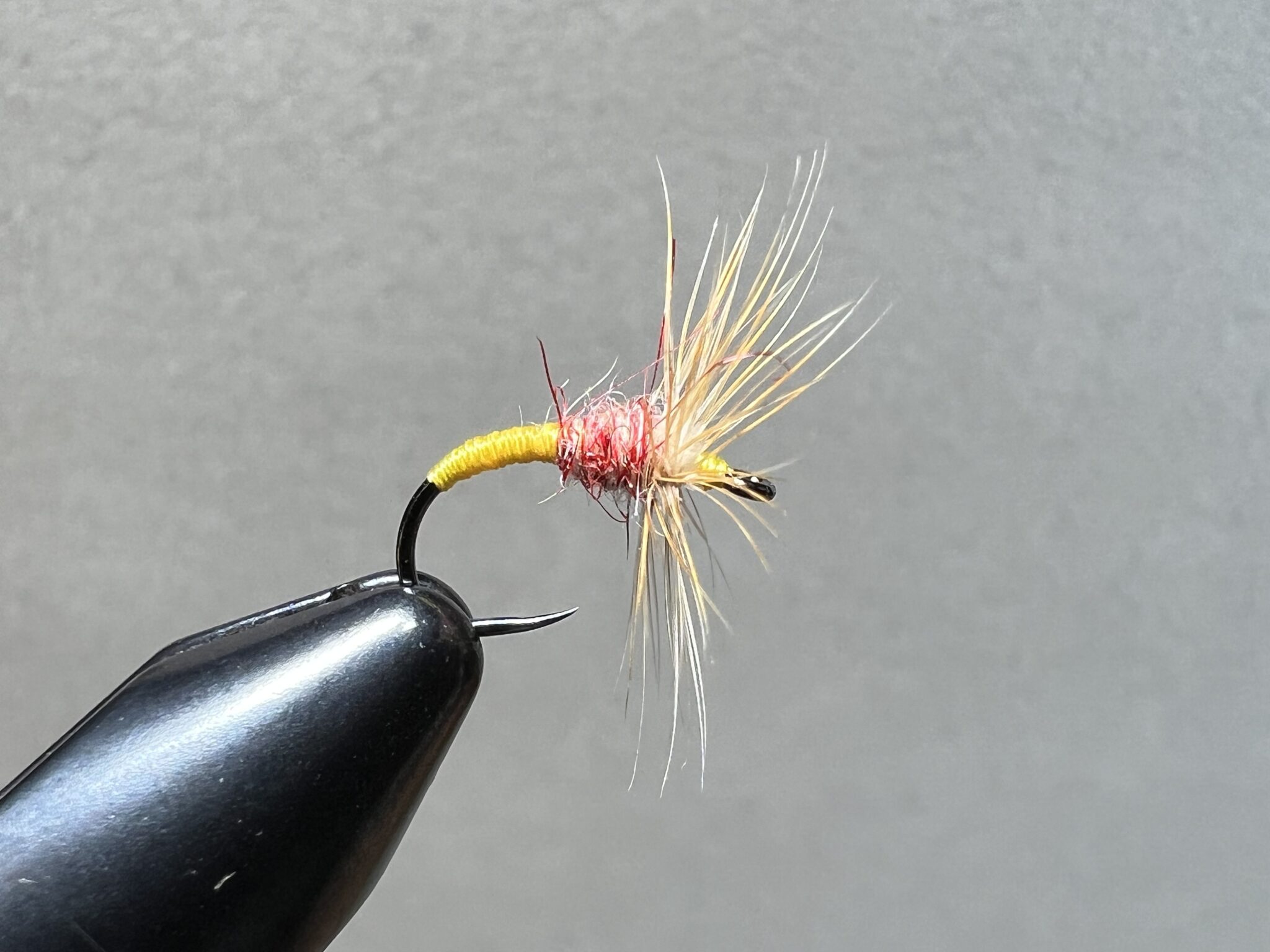
Many years ago, I was gifted a small bag of dubbing from an English acquaintance of mine. I had no idea what I was holding in my hand at the time and little did I know that it would eventually fuel a minor obsession that countless others had fallen into before me. He told me it was “authentic” dubbing for a fly called the “Tups Indispensable”. Of course, what I heard was, “Tup’s Indispensable” thinking that it was named after someone called “Tup” who must have invented the fly.
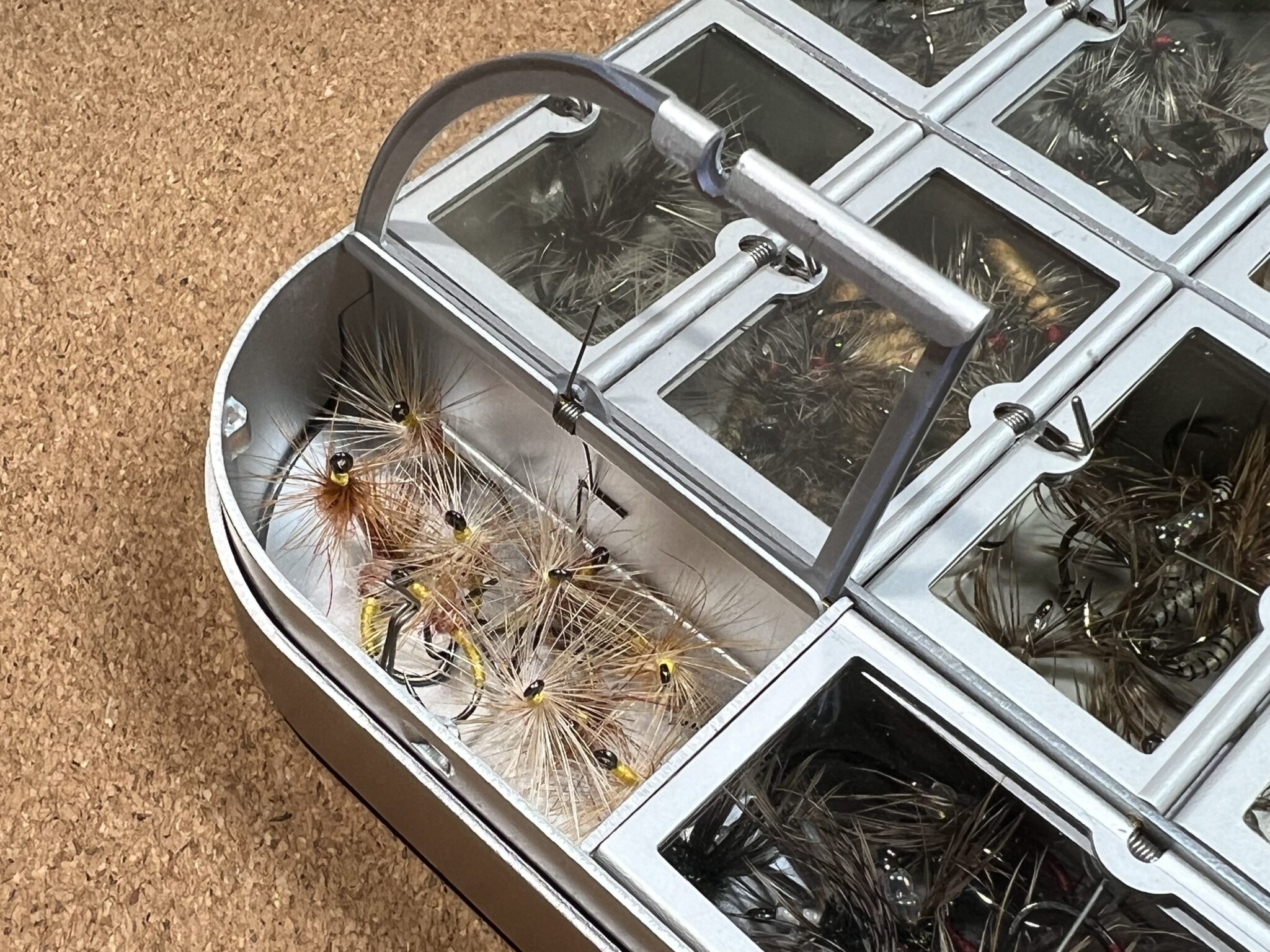
But the truth was something else. Something weird. It turned out that the “Tups (no apostrophe) Indispensable” was named so because one of the ingredients–urine-stained ram’s wool from the nether regions (“tup” is a Scottish word for ram). That detail was curious for sure, but not enough for me to give it much more than a fleeting thought. So, I just threw the bag of the strange stuff into my dubbing drawer to be forgotten for several years. Little did I know how valuable that little ziplock bag really was.
Eventually, I started hearing the name “Tups Indispensable” over and over again as I studied some of the UK fly fishing magazines (hand-me-downs from my boss). The pattern became increasingly interesting to me the more I read. It seemed to have earned a legendary status in England and I soon became intrigued. I exhumed the old dubbing and tied a couple of flies with it just as an experiment. It turned out the fly was an absolute cracker during my local sulphur hatches and I just fell in love with its color scheme–a subtle pink-ish/yellow that glowed brilliantly when backlit during evening hatches. I vowed to tie more, but somehow, just let the notion fall by the wayside (again).
After I moved to Colorado, my interest was renewed when an image of it came to mind for no apparent reason and suddenly, I felt compelled to revisit the fly. Unfortunately, the package of dubbing I got from the Brit was lost sometime during the course of several moves. I searched online for it (as many have) only to find the genuine stuff impossible to buy. There were a few commercially available attempts at “tups dubbing” but they were wrong. Though I no longer had a tangible reference, the image of it was etched in my mind and these did not look at all like what I remembered.
The only solution then was to blend it myself. I’ll spare you the lengths I went to to finally settle on what I now use for my Tups Indispensables (which see). It’s about as close as I can get to the precious dubbing I once held in my hand and so ignorantly cast aside. But what makes this dubbing so special?
The Mythical “Magic” Dubbing
The Tups Indispensable was invented at the the turn of the 20th century by commercial fly tyer R. S. Austin in Tiverton, England. The fly quickly became incredibly popular to imitate pale yellow mayflies and anglers swore by its “magical” translucent properties. They became so popular that Austin soon found himself sick of tying them, confessing to fly fishing legend G.E.M. Skues that his own home river “stank of Tups Indispensables from Maiden Newton [its headwaters] to the sea.”
The actual recipe remained a closely guarded secret for more than three decades before it was entrusted to his friend Skues and made public. Prior to that people struggled to match the dubbing’s seemingly ethereal radiance but Austin was quick to point out that they all fell short. And today, even though we now know the original recipe, many still struggle to find the right ingredients, so “substitutions” have almost become synonymous with the dubbing.
Austin’s magic blend is still a little vague in terms of a formula. But we know it consisted of the stained ram’s wool, spaniel fur, a little fine, “pale pinkish” hare’s mask from between the ears, and red seal. The early incarnations of the dubbing called for mohair, but Austin later switched it to red seal. And sometimes, he also added yellow seal but eventually thought it unnecessary.
My proportions are slightly different as well. Austin’s flies were about 2/3rds dubbing and 1/3rd thread for the body. But I tie it more like sakasa kebari proportions which is vice-versa: 2/3rds thread and 1/3rd dubbing.
Tups Indispensable Recipe (Tenkara Style)
Hook: Firehole Sticks 316, #14-18
Thread: YLI Silk, Buttercup or pale yellow (primrose)
Hackle: Ginger or Dun
Thorax: Tups Magic Dubbing (see the how-to below)
Body: Thread
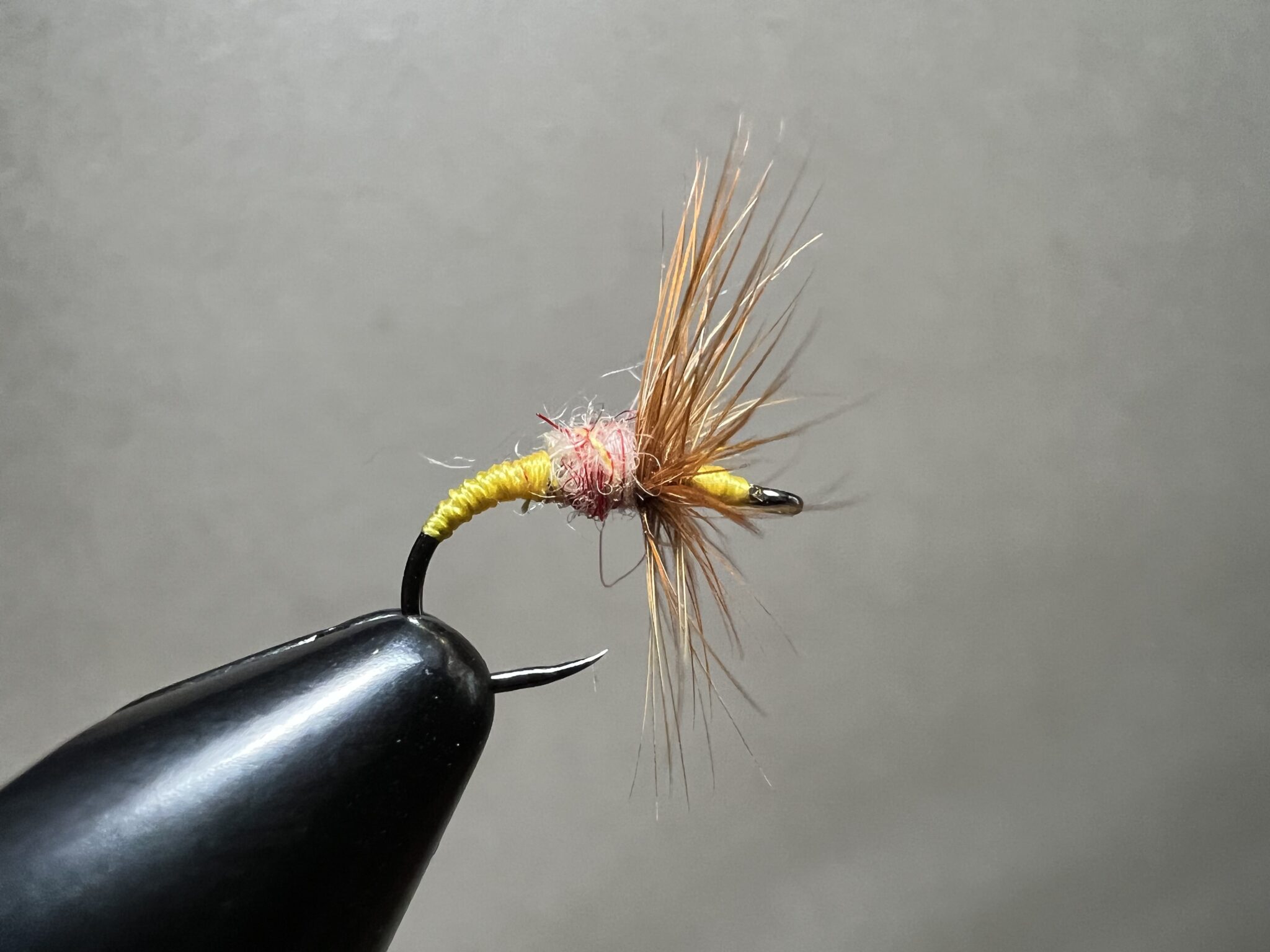
I tie this fly in a “futsu (stiff hackle)/sakasa” style sans the tail of the original to make it more tenkara-esque and with either dun or ginger hackle. Austin referred to the hackle he used as a “rusty dun” but like the elusive dubbing, the rusty dun commercially available today varies greatly and it’s hard to pin down exactly the one closest to his. So most modern anglers have settled on either ginger or dun.
The original was tied in both dry and wet fly versions–the main difference being in the stiffness and density of the hackle. I chose the futsu style for my interpretation so it can be fished as either without having to switch flies.
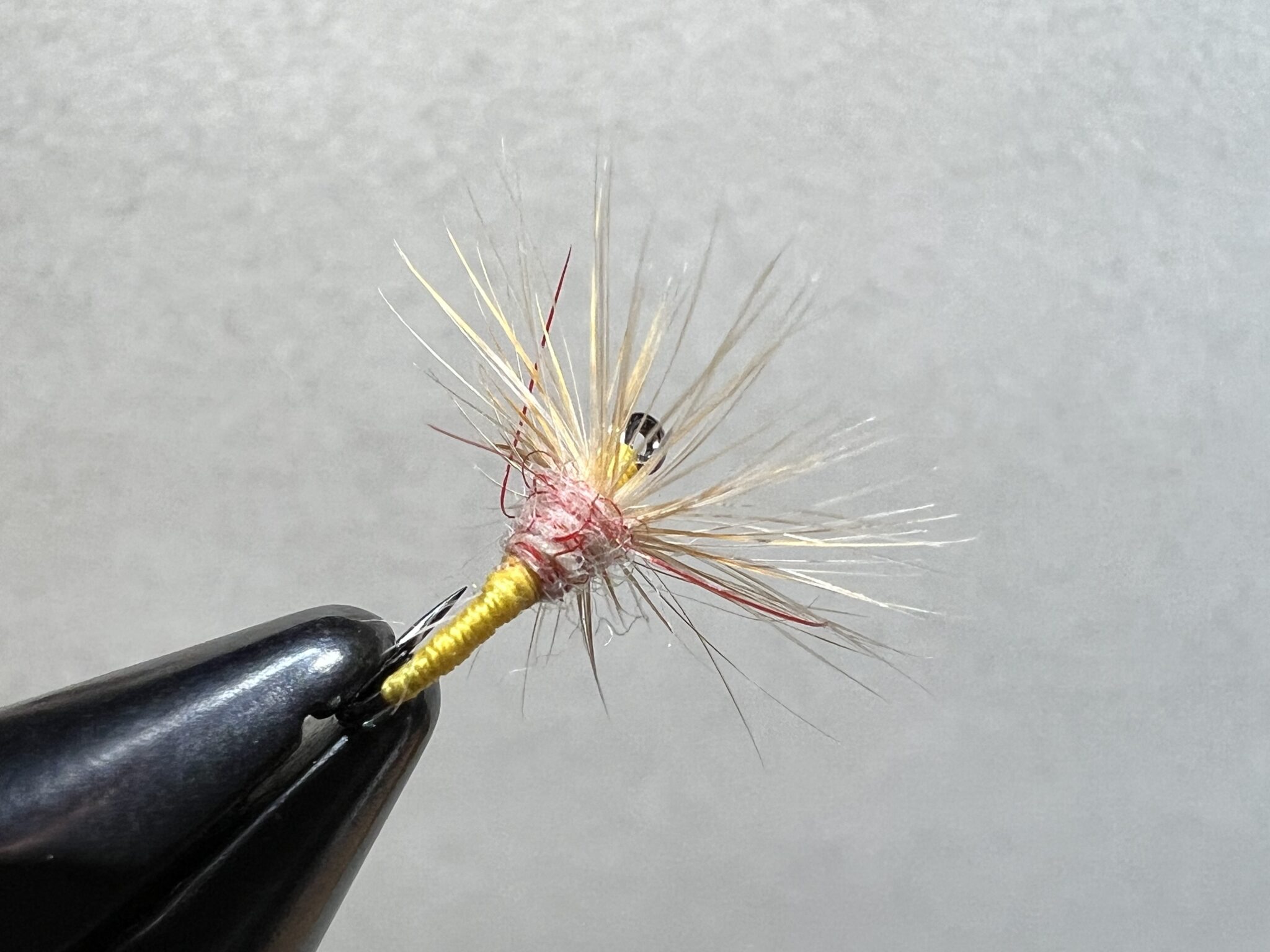
True to its “magical” reputation, here’s what the fly looks like when backlit. It glows! Imagine serving one of these up to rising trout during an heavy evening sulphur hatch.
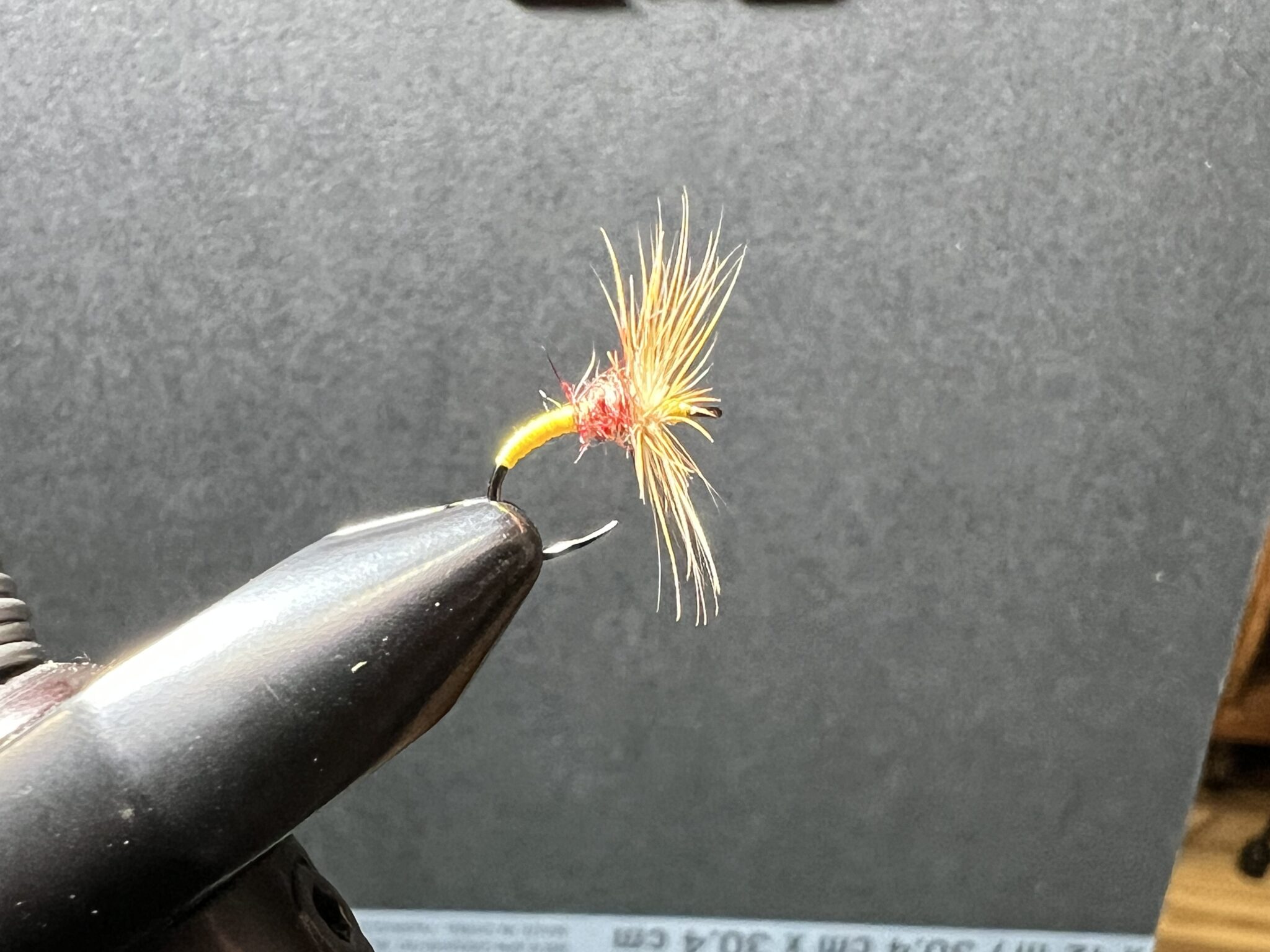
Just for comparison, here’s an old fly I tied using dun rather than ginger (I prefer the ginger):
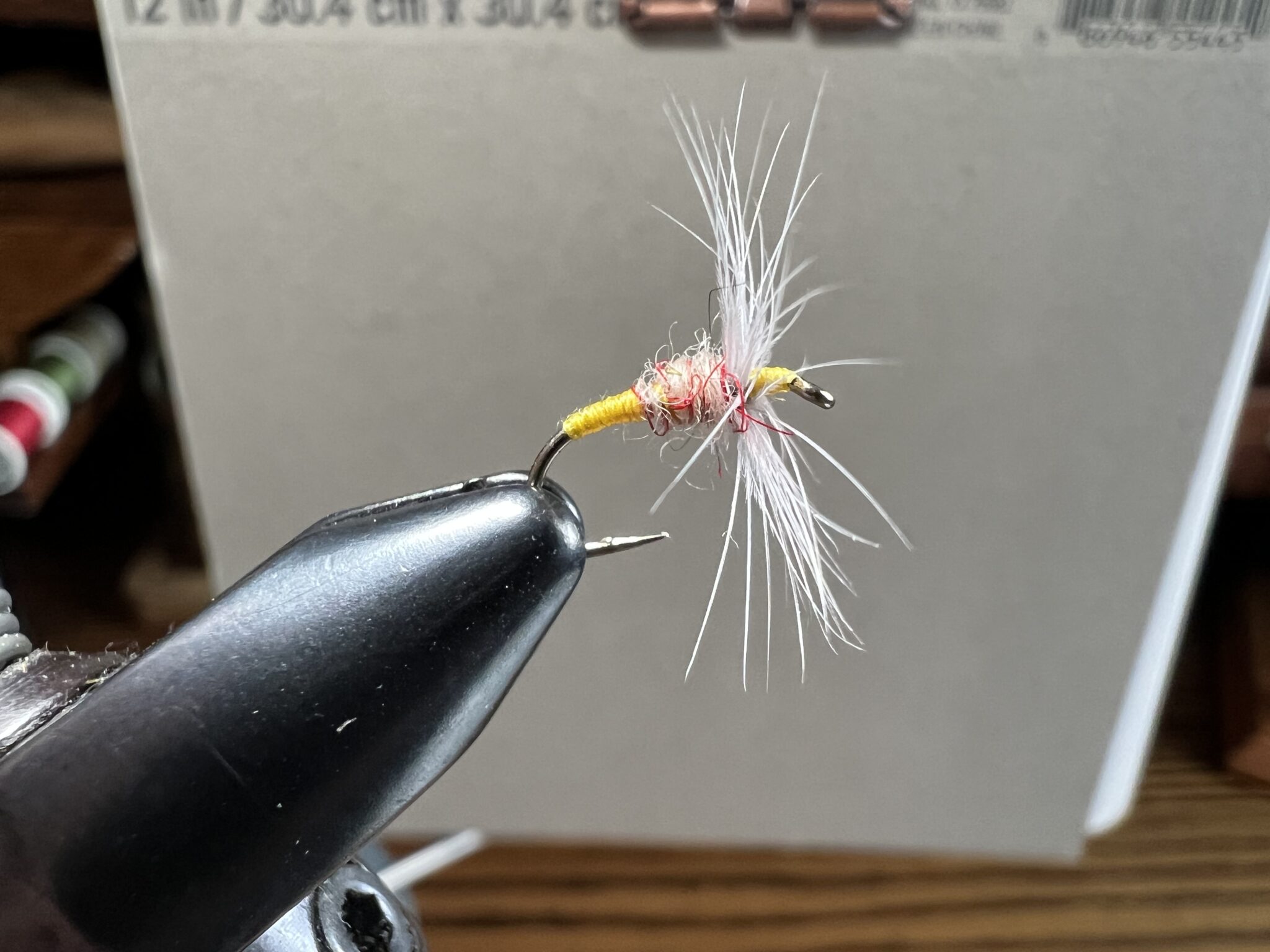
My Tups Dubbing Blend
Aside from the lack of tail, I tried to remain as faithful as possible to the original–at least in terms of the dubbing. The one exception I had to make was the urine-stained wool from the ram’s [cough] … “down there”. For this, I used some old ram’s wool which I dyed light yellow with lemonade flavored Kool-Aid (making do with what I had just like the early tenkara fishermen). While I can’t do a side-by-side test to see if it’s as translucent as the real deal, I imagine it’s got to be pretty close (or close enough). This combined with the translucency of the red seal fur are key to the dubbing’s siren song.
What you’ll need
- Pale yellow ram’s wool
- Spaniel combings
- Hare’s mask fur
- Red seal fur
How to blend it
Note: I highly recommend making your mixture with a small coffee grinder for a more consistent blend that is easier to dub. Also, these measurements are approximate and require to you to pay attention as you blend to see how the color is changing as you add different materials. Remember, you can always add more as you go, but you can’t take it out. So it’s better to start off frugal and adjust as needed rather than just throwing everything in the grinder at once. Think cooking rather than baking.
- Start with 50% wool and 50% spaniel and blend. You should end up with a pale, creamy yellow color.
- Next, add in a pinch of hare’s mask–about 15%-25% of what you already have. How much you add will vary depending on the color of the mask you’re using. Austin specified the “fine, pinkish hare’s mask between the ears”. In reality, any natural hare’s ear looks good.
- Blend again and slowly start adding tiny amounts of red seal. Be judicious. Think impressionism. Look at the dubbing and squint. If it it all blends together to give an overall “suggestion” of pink, you’ve got it. Or better yet, hold it up to your lamp and see what it looks like backlit.
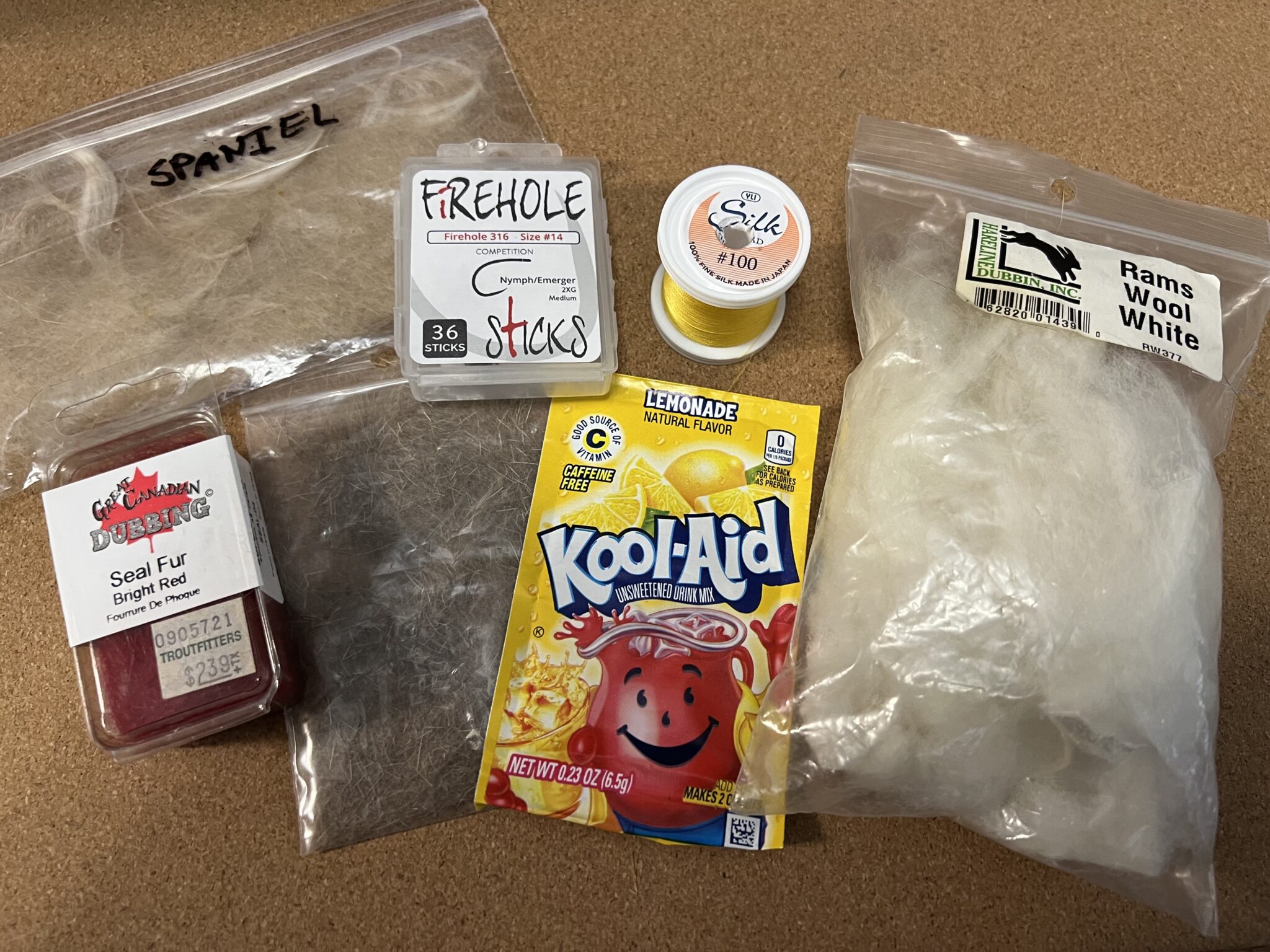
The camera doesn’t do it justice, so, I took pictures of my blend with different colored backgrounds what it looks like against different backdrops.
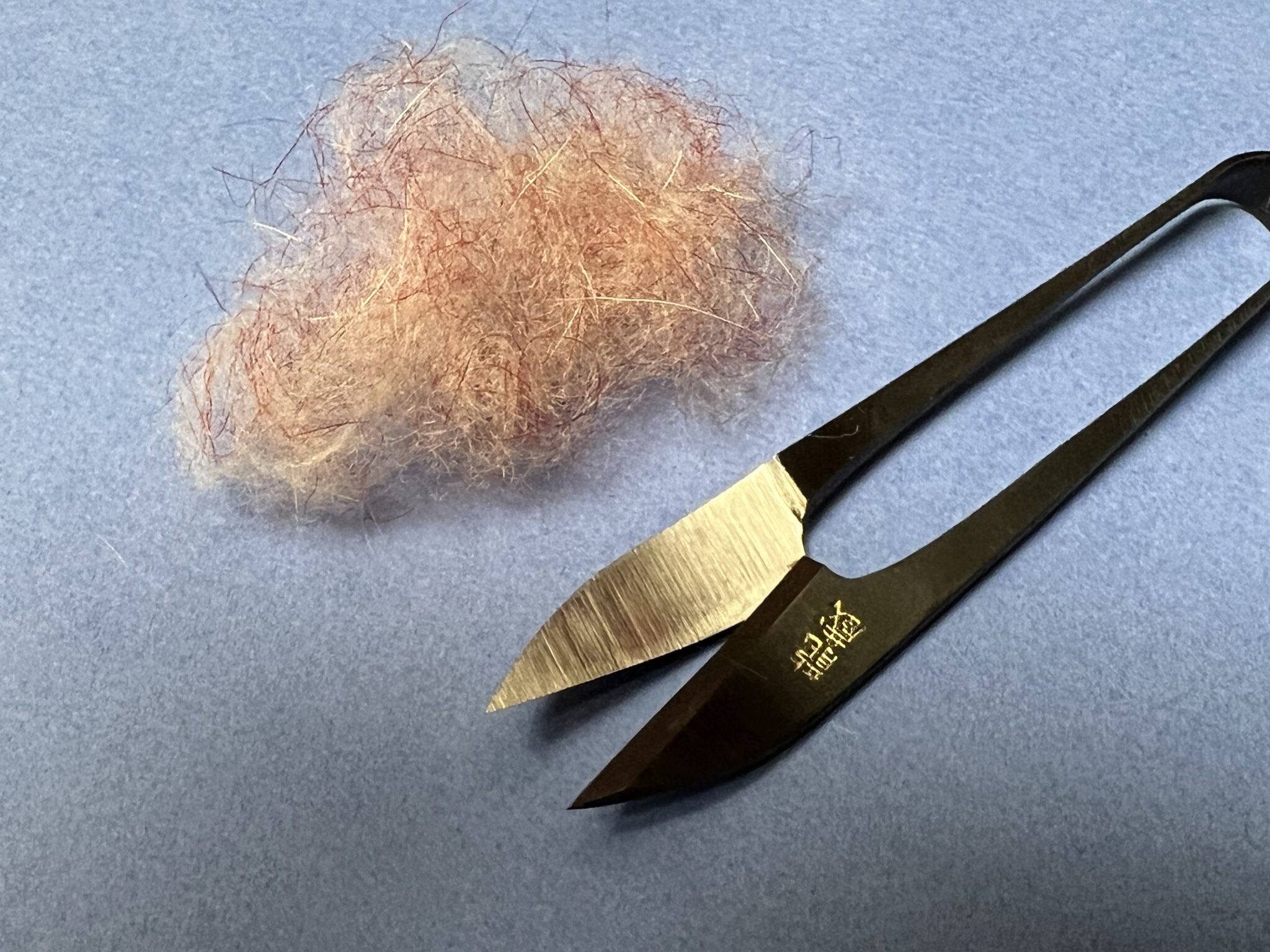
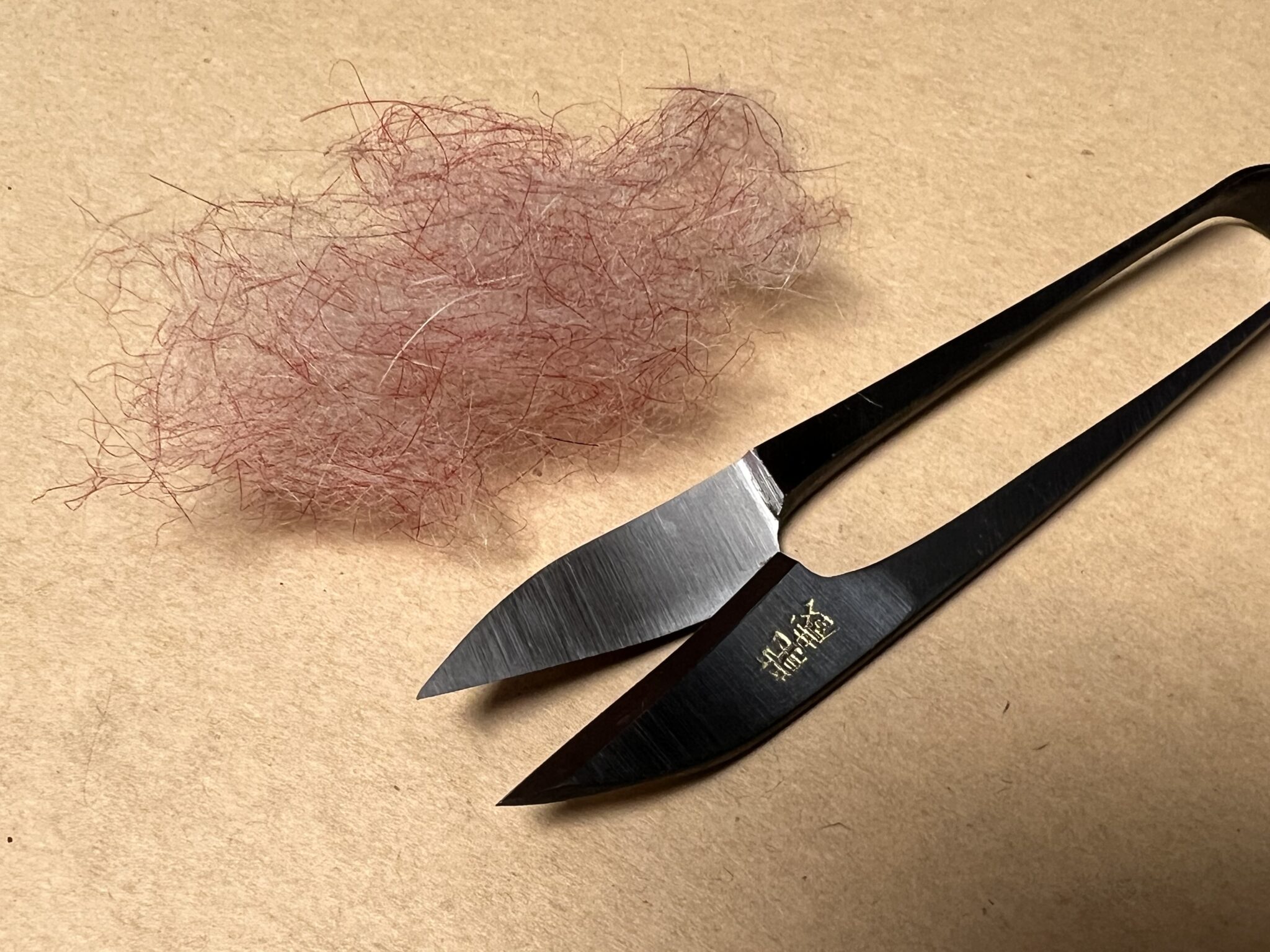
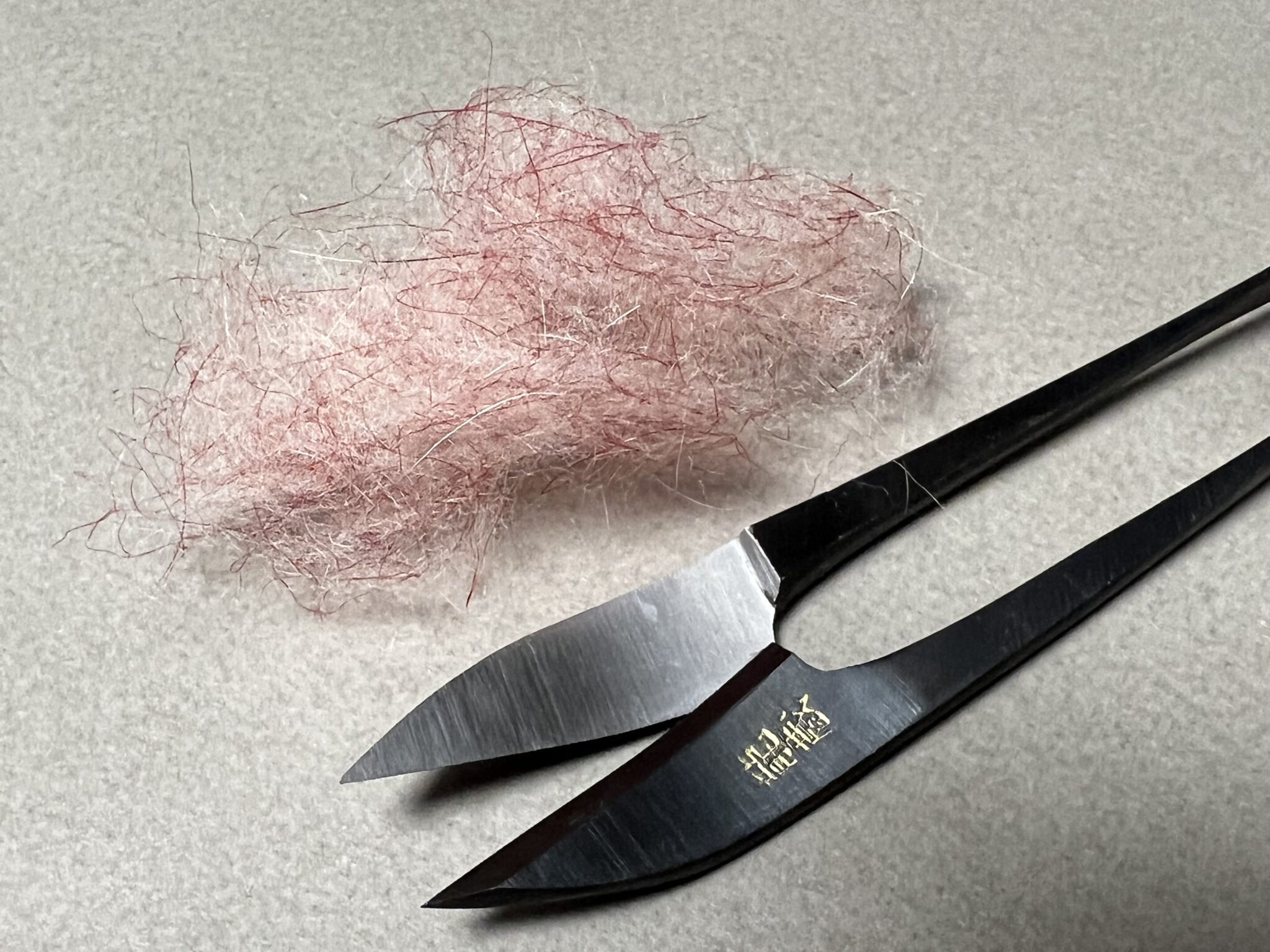
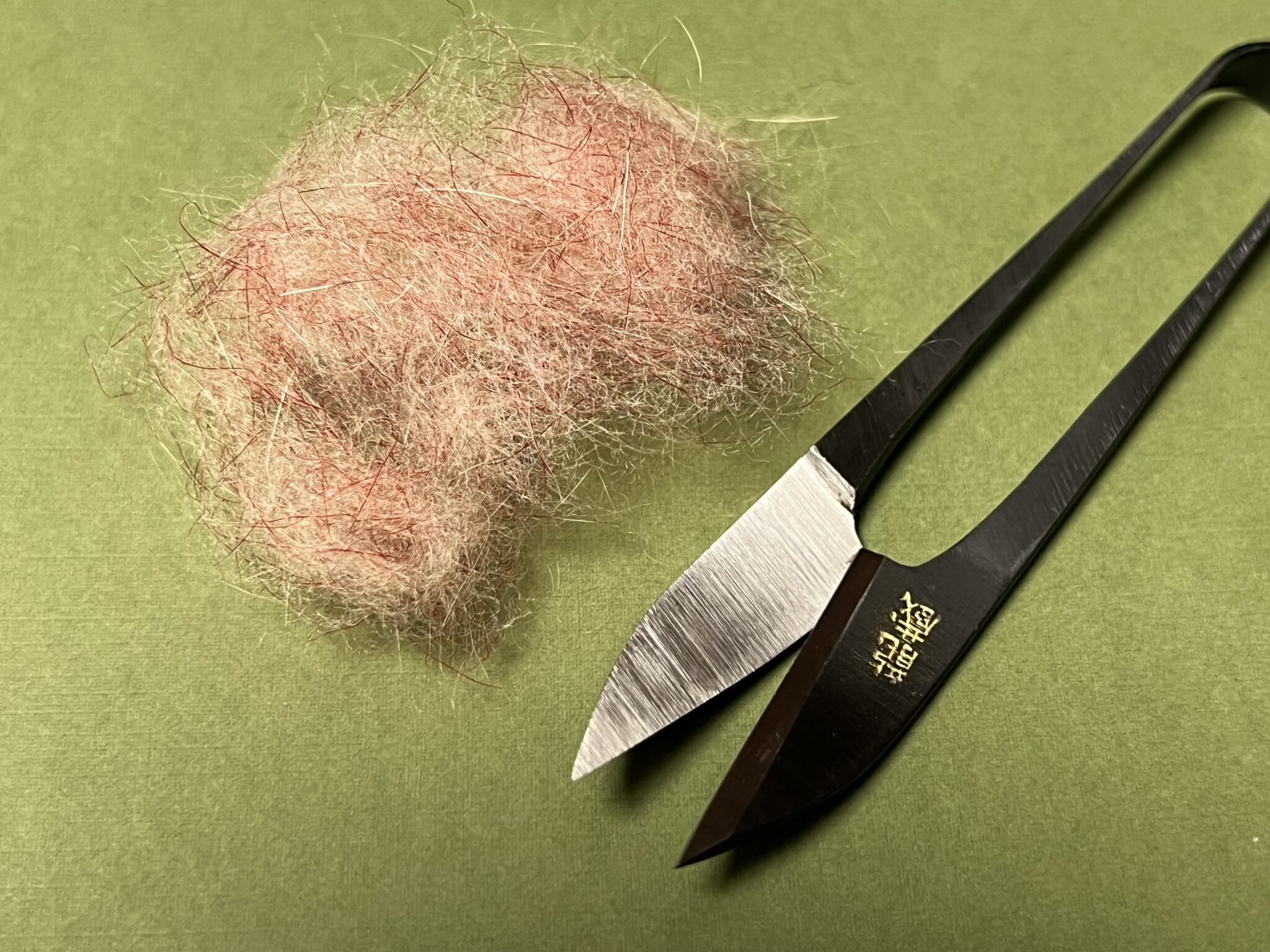
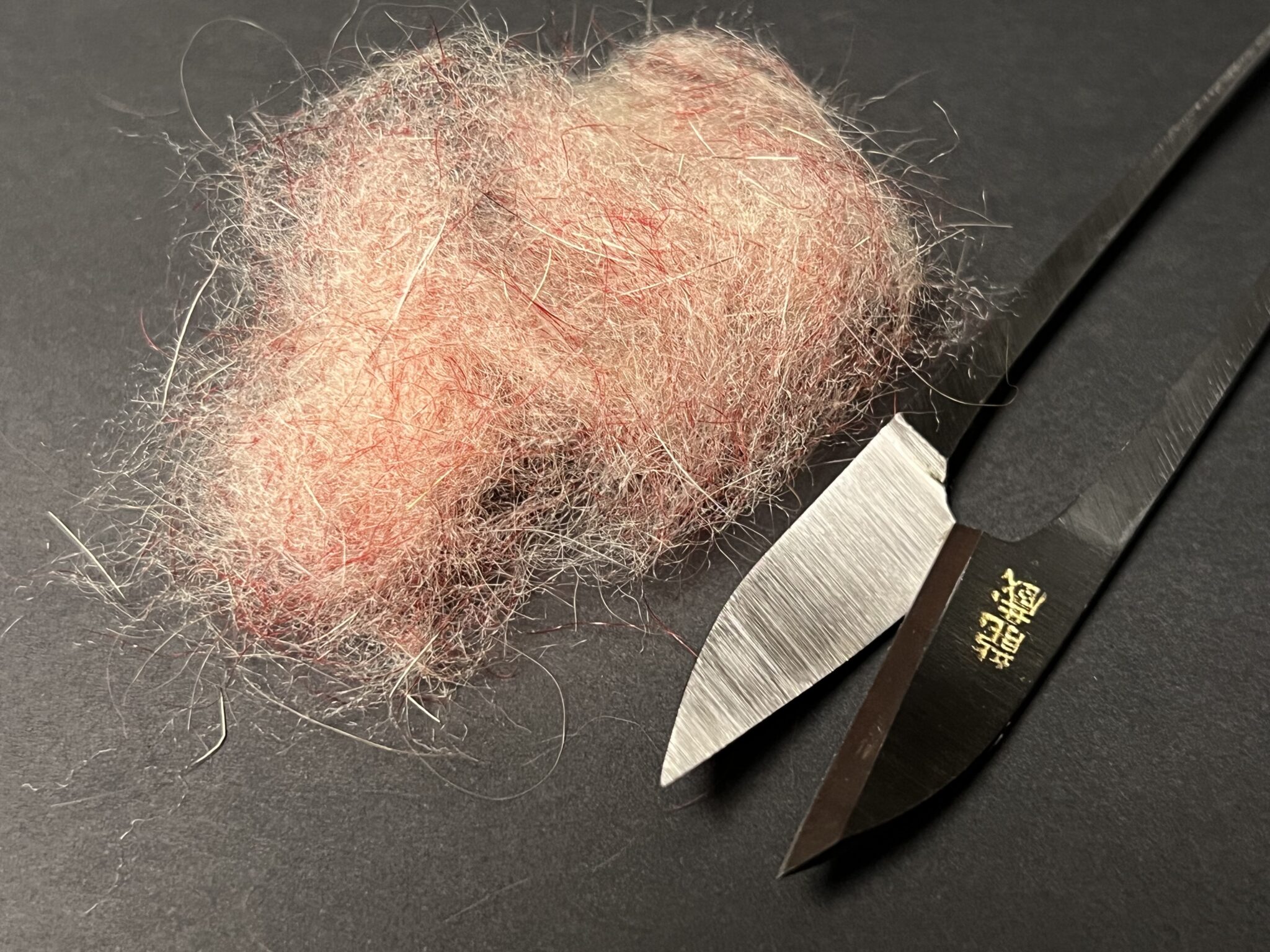
Presentation
To be completely honest, I’ve only fished this fly in an upstream or downstream dead drift. I’ve never swung it like a wet fly though I imagine it would work swimmingly. I definitely plan to try that and some other experiments this year like dapping to imitate egg laying flies. I’m happy with the materials and I know it catches fish. But I’m curious to see how it will perform with different sasoi techniques. I’m positive it will be a great general attractor here in Colorado as well.
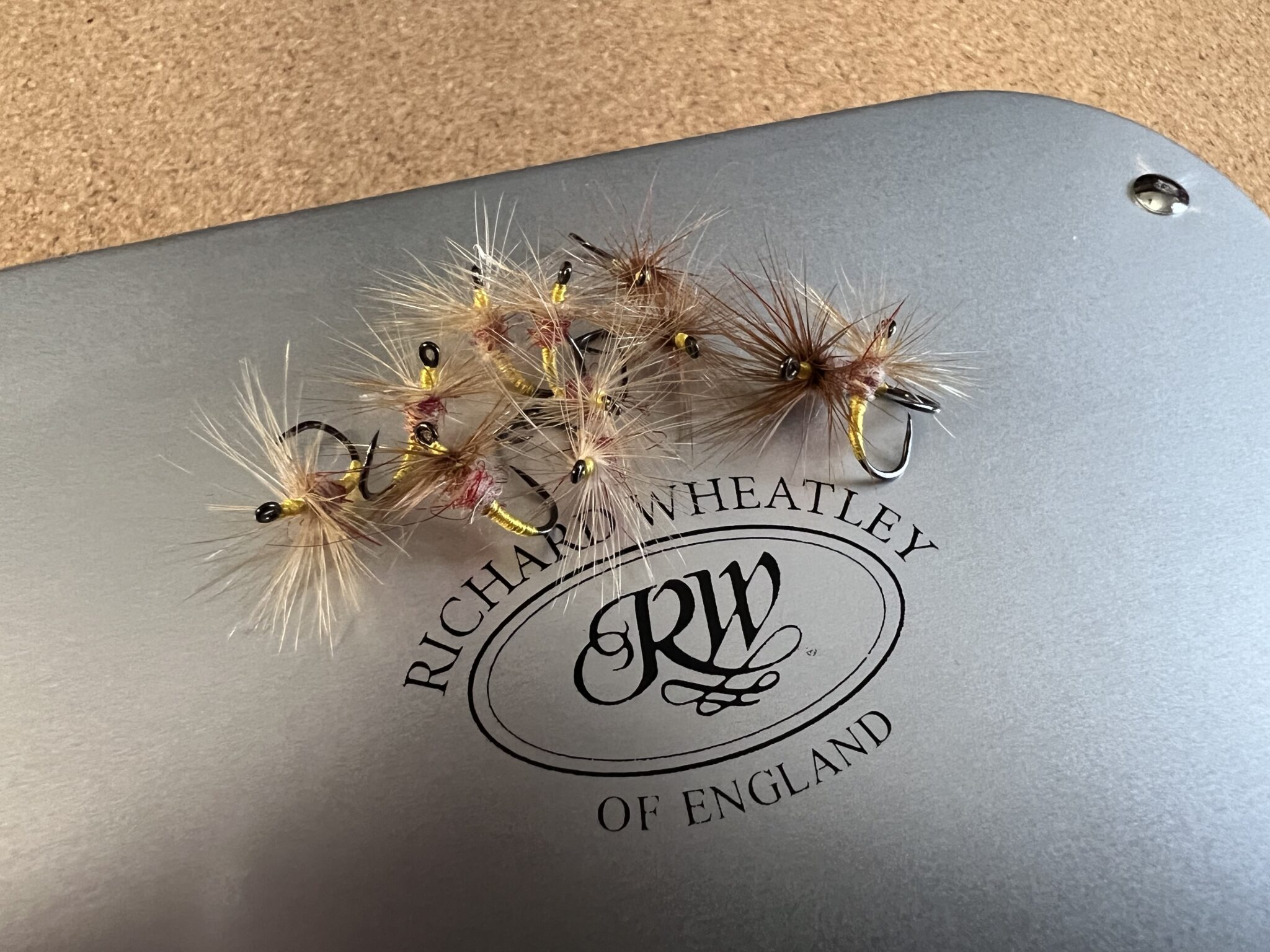
If you’re at all interested in fly history, you owe it to yourself to Google the Tups Indispensable. And if you love fishing classic flies, you owe it to yourself to fish with one! It’s one of those venerable patterns that’s lived up to its reputation with fishers for well over a century, and has left an indelible mark in the annals of fly fishing. To tie or fish with one is to fish with a piece of our sport’s history.








Anatomically, it could be complicated for a ram to urinate on its own scrotum. The sources I’ve seen about the Tups suggest the special property of the hair may have to do with lanolin (hence, perhaps, Skues’s use of “stank”).
Pinkish urine-stained _vixen_ fur is part of the recipe for Roy Steenrod’s Hendrickson dun.
Hi Bruce, interesting point. But what then would account for the yellow-ish color if not urine? From what I understand, lanolin is removed before processing and according to Skues, the wool was heavily washed before using.
Genes, I suspect.
Correction: The hair was dyed by breeders as a way of keeping track of how the ram had done his duty to the flock:
“In Britain in those days, farmers used a sponge or rag soaked in dye tied to the underside of the ram. In the morning, they would inspect their flock to see which females had dye stained on their backs from being ‘tupped’ by the ram.” Břetislav Kašpar, “Tup’s Indispensable”, Global Flyfisher, March 17, 2017 .
The post doesn’t explain if the dye was always yellow how well it stood up to the thorough washing required to make it work as a tying material
Hi Bruce, yes, I knew about the dye and that the farmers would check the sheep to see if they had been “tupped”. But I think I read somewhere that the dye was a red or pink–not yellow. Of course, maybe different farmers used different colored dyes. Who knows?
At any rate, the end result is the same. I tried using pre-dyed light yellow wool yarn and it looks great, but it doesn’t have the translucency as the ram’s wool (it’s probably over-processed).
I’ve carried a kbari inspired version of Tups indispensable in my guide box for many years now. It is a fun exercise to tie one on at some point during the trip, then tell the client they just caught a fish on a centuries old fly pattern. Great way to open up a conversation about the history of fly fishing and tenkara methods. My version originally used yellow floss for the body. Now I am using fern dyed wool yarn from friends in Japan (creamy yellow, could get a similar effect with onion skin, I suspect). Dubbing is usually just a pink scud dub, such as that used for hot spot.
Hi Rob, great minds think alike! Here’s a picture of my Ichiban Kebari in a Tups Indispensable version.
Another “Great Article”; you are on a roll 🙂
Thanks Walt
Thanks Walt! I’m trying to regain my momentum. Check out the article I just posted a few minutes ago. You might already know about it, but if not, maybe you’ll find it interesting.
THE SIMPLE FLYS IS WHAT ATTRACTED ME TO THIS FORM OF FISHING. THAT IS A COOL FLY AND UNUSUAL MATERIALS,JUST THREE OR SO MATERIALS IS ALL IT TAKES TO CATCH A FISH. I FORGET WHO I WAS READING SAID THAT HE TRYED TO SEE JUST HOW LITTLE MATERIAL ON A HOOK IT TOOK TO CATCH ONE. EVEN THOUGH I LIVE IN THE MID WEST AND NO TROUT TO BE FOUND HERE. I LIKE THE OVER ALL SIMPLICITY (IF I COULD JUST KEEP IT SO) OF TENKARA.
Jason, next time I see my urologist for cancer checkup, I send you all you want! Lol
Hi Eugene, sorry, wens me some what?
Urine to dye with!